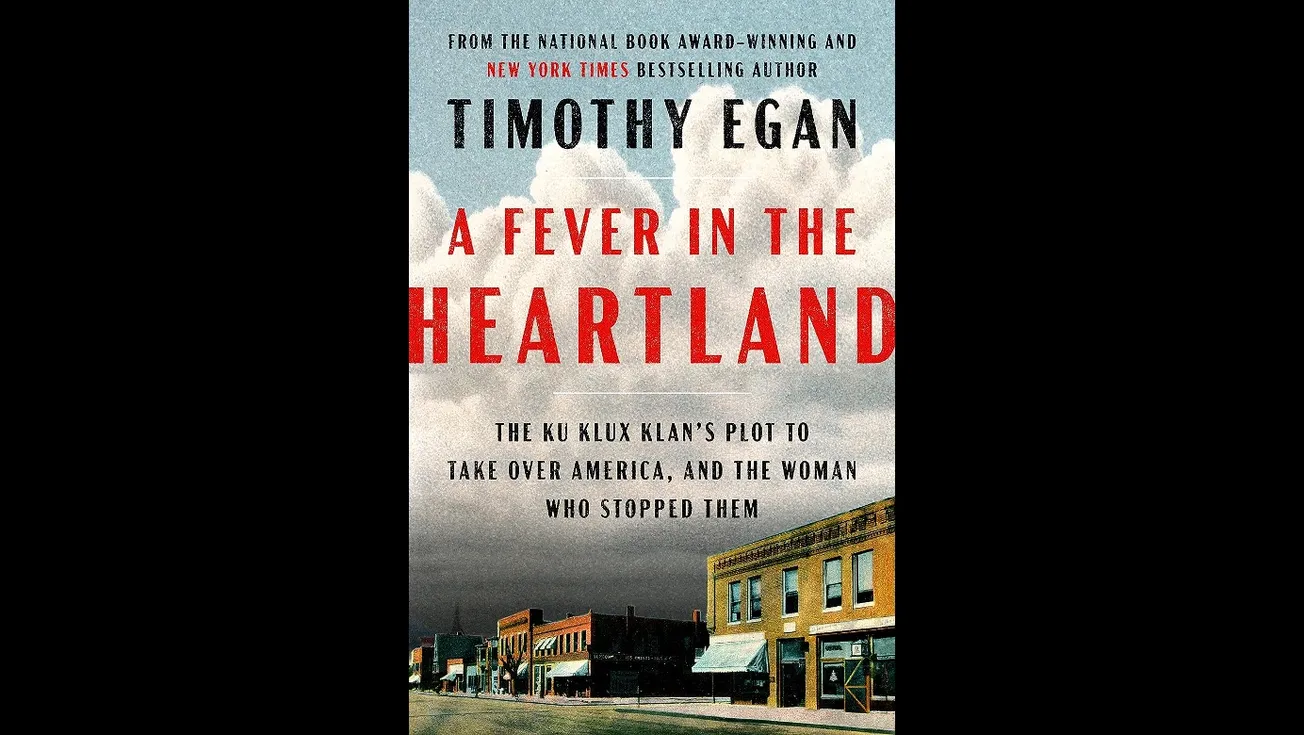It has become common to hear politicians and pundits compare Donald Trump to Adolph Hitler and other high-ranking Nazis. But if there is anyone who reminds me of Trump, it’s not the Führer, who, while a homicidal demon, was restrained and clever. No, the best comparison to Trump is D.C. “Steve” Stephenson, the Imperial Grand Dragon of the Ku Klux Klan in the early 1920s. Pulitzer-Prize winning author Timothy Egan has written the definitive account of Stephenson’s rise and fall in A Fever in the Heartland: The Ku Klux Klan's Plot to Take Over America, and the Woman Who Stopped Them.
Like Trump, Stephenson got into politics after having run various grifts and cheated an untold number of subordinates, tradesmen, and just plain folks. Like Trump, Stephenson had several wives (although the latter didn’t bother with a divorce before moving on to the next bigamous marriage). Stephenson was the original “grab-them-by-the-pussy” guy, regularly raping the secretaries, waitresses, and other blue-collar women he encountered. To give Trump his due, he’s not rumored to have regularly bruised, choked, cut, and bitten women to get his sexual thrills, which was Stephenson’s style.
Like Trump, Stephenson had a genius for appealing to Protestant Americans’ fear of African Americans, Jews, Roman Catholics, and immigrants, telling people what they wanted to hear, surrounding himself with duped (and money-hungry) ministers, and dazzling the rubes with pomp and pageantry. While Trump talks about “real Americans,” Stephenson spoke of “pure Americans.” Like Trump, Stephenson was a Republican Party kingmaker, hand-selecting candidates for offices from the lowest office to the vice presidency of the United States — although, unlike Trump, Stephenson’s picks nearly always won in a landslide. Like Trump, Stephenson built an enormous army of devoted dupes out of nothing at all. At its height, the Invisible Empire of the Ku Klux Klan had between 2.5 million and 4 million members.
When we despair, we should remember the early 1920s, when one-third of Indiana men belonged to the Klan — plus their women and, yes, their children, who were in a sort of Hitler Youth-style organization called — I kid you not — the Ku Klux Kiddies. Klansmen openly defied the law because their fellow Klansmen controlled the police, the mayors’ offices, the newspapers, the courts, and several governorships. KKK members were actually elected to Congress. The KKK controlled state legislatures not only in the South, but in most of the Midwest and the Pacific Northwest. Indeed, Indianapolis had three times as many Klansmen as Atlanta! President Woodrow Wilson, while not a member, was extremely sympathetic to their cause.
“When hate was on the ballot, especially in the guise of virtue, a majority of voters knew exactly what to do,” Egan wrote. In 1924, the Klan was well on its way of taking over the United States in the same way that Recep Tayyip Erdoğan did in Turkey, Viktor Orban did in Hungary, and Jaroslaw Kaczynski did in Poland: through the ballot box.
Klansmen openly spoke of the kind of double-standard that’s at the crux of the MAGA movement: no accountability for the KKK members and total impunity to break the law against disfavored groups. In 1924, the Klan even suggested building “a wall as high as heaven” to keep out immigrants.
And while the Klan had several million members, their reach and power was even greater than their numbers, just as has happened with the MAGA movement. As one top Klan official said: “There are millions who have never joined, but who think and feel and, when called on, will fight with us. ... This is our real strength, and no one who ignores it can hope to understand America today.”
Like Trump, Stephenson saw himself as beyond the reach of any law. Until in 1925, when he wasn’t — due to his own carnal impulses, hubris, and greed. Egan has crafted a nonfiction book that reads like a thriller as readers hurry to find out how Stephenson met his downfall. Here’s hoping that history will repeat itself.
--30--
In the interest of full disclosure, I received this book from NetGalley and Penguin Group Viking in exchange for an honest review.
Comments







